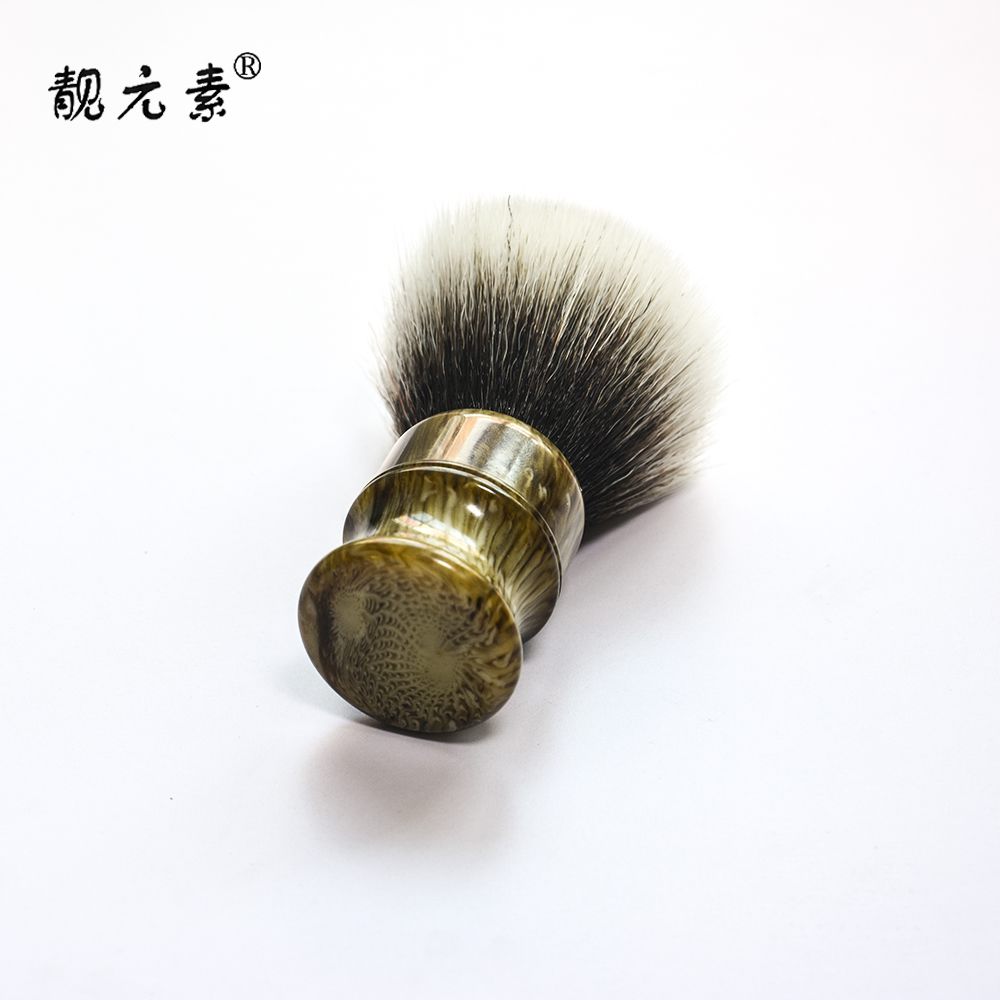Industry news
The Influence of Shaving Brush Loft on Shaving Experience
- 652 Views
- 2025-08-13 02:31:54
The Influence of Shaving Brush Loft on Shaving Experience
In the realm of traditional wet shaving—where ritual and precision meet—every component of the toolkit plays a role in crafting the perfect shave. Among these, the shaving brush stands as a cornerstone, transforming ordinary shaving cream into rich lather and elevating the experience from functional to indulgent. Yet, while many enthusiasts focus on bristle material or handle design,one often-overlooked detail holds surprising sway over performance: the brush’s loft.
So, what exactly is “loft”? Contrary to common误解, shaving brush loft does not refer to the total length of the bristles themselves but ratherthe distance from the top of the brush handle to the tip of the bristles—the portion of the bristle that extends beyond the handle. This seemingly minor measurement is a silent architect of your shaving routine, shaping everything from lather quality to skin comfort.

How Loft Shapes Lather: Air, Cream,and Fluffiness
At its core,a shaving brush’s primary job is to create lather—a task deeply influenced by loft length.Longer loft (typically defined as over 52mm for most brushes) means more space between bristles. This extra room acts like a miniature mixer, trapping air and allowing shaving cream or soap to expand into a voluminous,pillowy lather. For those who crave a cloud-like foam that cushions the blade and moisturizes the skin, a longer loft can feel luxurious. However, there’s a caveat: excessive loft may reduce efficiency.A brush with overly long loft lacks structural support, causing bristles to splay too widely. Instead of whipping cream into lather,it may merely push product around—frustrating for users seeking quick,luxurious results.
Shorter loft (around 45–48mm), by contrast,packs bristles more tightly. This density forces cream and water into closer contact,fostering a denser,creamier lather with minimal air pockets. Barbers often prefer shorter loft brushes for their ability to generate “working lather”—thick enough to cling to the skin without sliding, ideal for intricate areas like the jawline or upper lip. Yet,this density has trade-offs:less air means less volume, so users may need to reload cream more frequently.
Comfort and Contour Adaptation: Softness vs. Precision
Beyond lather, loft dictates howthe brush feels against your skin. Longer loft bristles are inherently more flexible, bending gently under pressure like soft grass. This flexibility distributes force evenly, making them ideal for sensitive skin or those who shave with light pressure. Gliding over cheeks or neck, a long-loft brush minimizes friction,reducingshaving irritation and razor burn. The downside? Too much flexibility can turn into floppiness. When navigating tight spots—like around the nose or under the chin—a long-loft brush may collapse, failing to reach every hair follicle effectively.
Shorter loft brushes solve this precision problem.With stiffer,bouncier bristles,they maintain shape even when pressed against contours. Think of them as tiny, resilient brooms: they dig into creases,cradle curves,and ensure lather reaches every hair. This makes them a favorite for heavy stubble or users who prefer aggressive, efficient shaves. But beware of rigidity:shorter loft brushes concentrate pressure on a smaller area.Harsh angles or excessive force can irritate delicate skin, turning a smooth shave into a red, bumpy ordeal.
Durability:A Hidden Factor
Loft also impacts a brush’s lifespan.Long-loft bristles endure more stress—each shave bends them farther,fatiguing fibers over time. Poor-quality synthetic bristles or fragile natural hairs (like pure badger) may fray or shed prematurely with extended use.In contrast, shorter loft brushes distribute stress evenly across bristles.Their compact structure resists bending, keeping fibers aligned and intact for years. For daily shavers or those investing in premium materials (like silvertip badger or high-grade synthetic fibers), shorter loft often translates to better long-term value—less replacement,more consistent performance.
Choosing Your Loft:It’s Personal
So,which loft is right for you?There’s no universal answer, but these guidelines help:
• Sensitive Skin/Soft Shave : Opt for medium-long loft (50–53mm). It balances softness with structure—gentle enough for irritation-prone skin,yet sturdy enough to avoid splaying.
• Efficiency/Heavy Stubble : Medium-short loft (48–50mm) strikes gold here. It generates dense lather quickly and adapts to contours, tackling tough hair without sacrificing comfort.
• Barbers/Pro Users: Short loft (under 48mm) offers unbeatable control. Pair it with a boar bristle brush—known for rigidity—and you’ll master precision shaves effortlessly.
Remember: loft doesn’t exist in a vacuum. Bristle material matters too. Synthetic fibers,with their springy resilience,tolerate longer loft better than natural hairs. Badger hair,which softens when wet,thrives with medium loft to avoid over-splaying. Always check manufacturer recommendations—reputable brands design loft lengths to complement their bristle types.
The Loft Advantage: Small Detail, Big Difference
In the end, shaving brush loft is more than just a number—it’s a bridge between tool and experience. Whether you crave fluffy lather, irritation-free comfort, or long-lasting durability, getting loft right transforms a mundane task into a ritual worth savoring. So next time you shop for a brush, look beyond the handle’s shine or bristle’s softness. Measure the loft, consider your needs, and let this silent architect of shave quality guide you toward a better, smoother shave.











